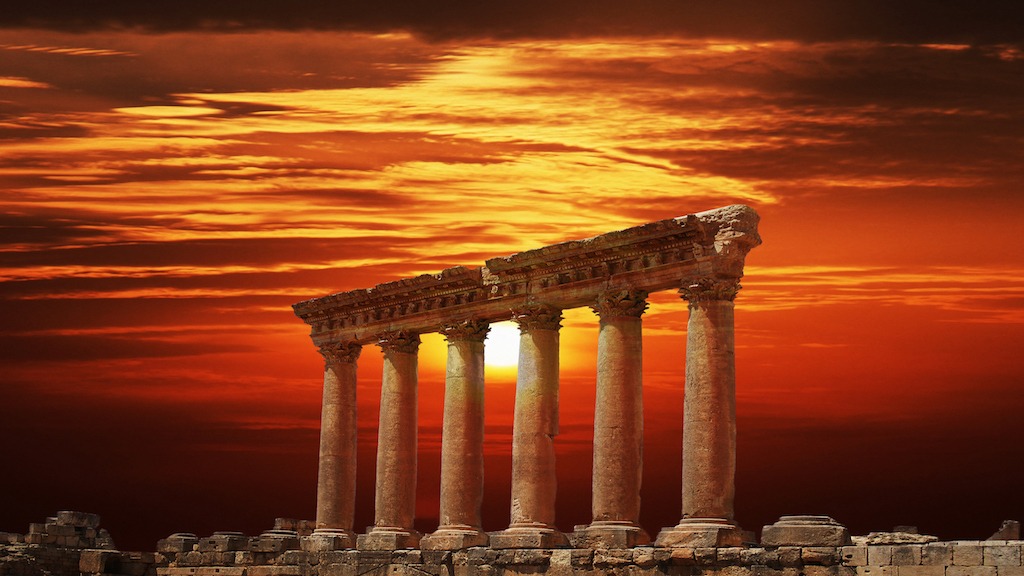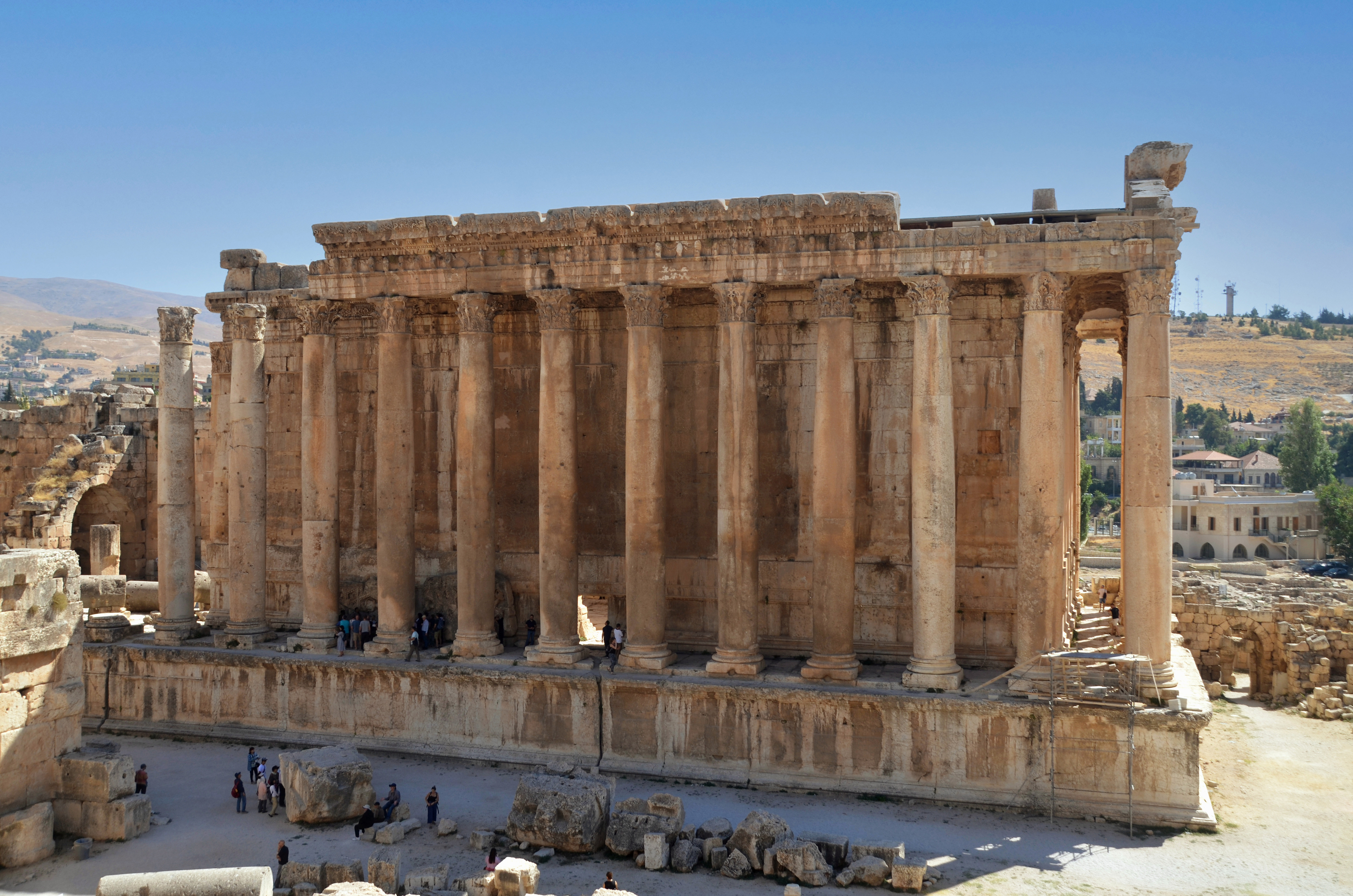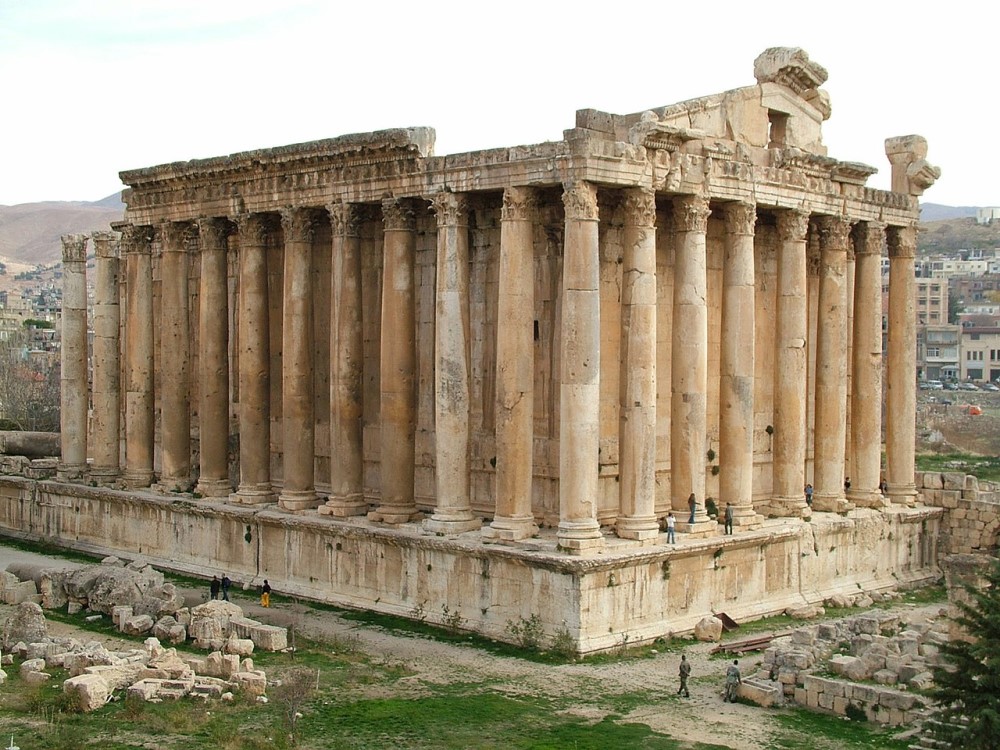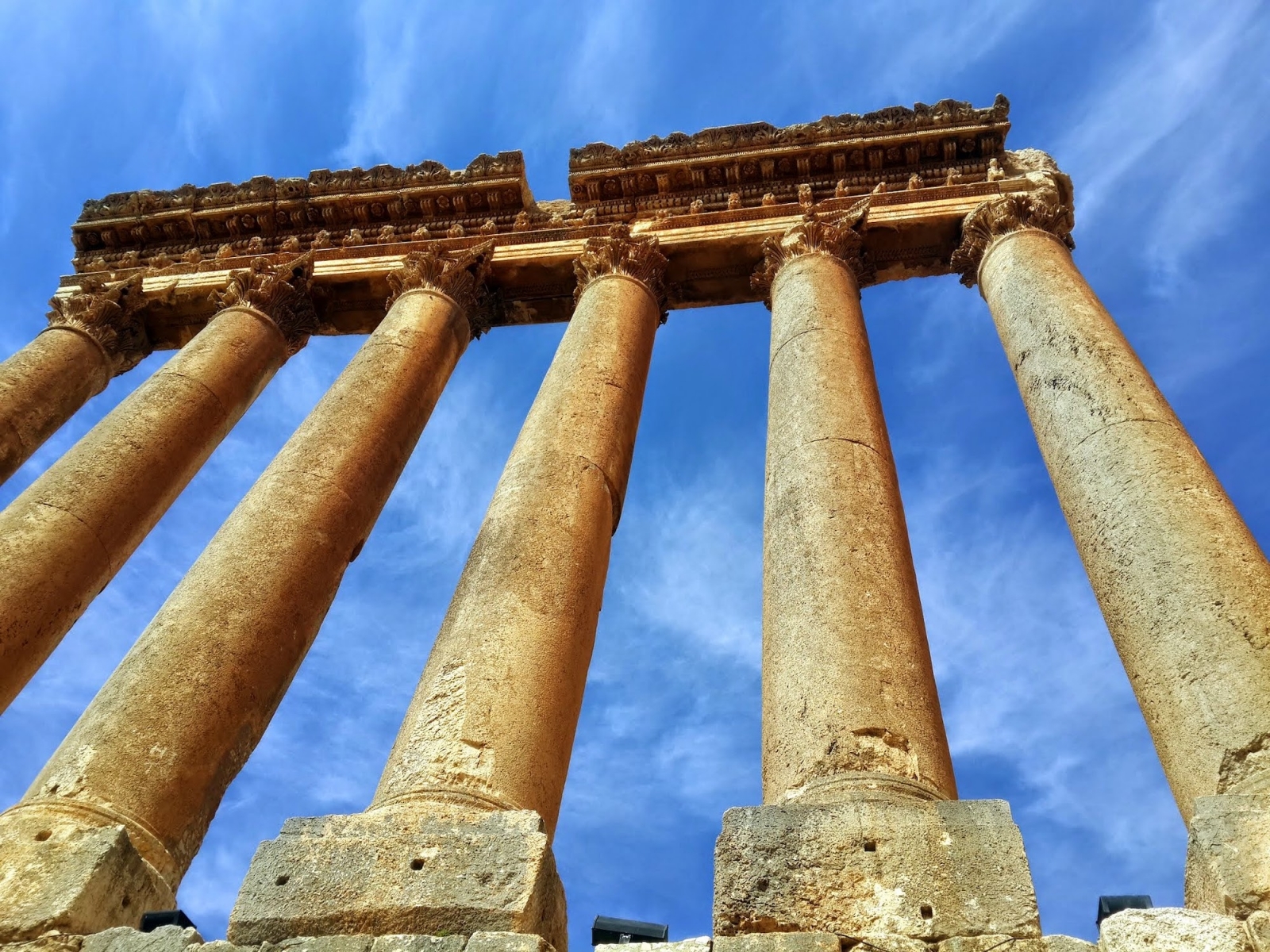The Baalbek Temple Ruins: A Must-See for History Buffs

If you're a history buff, you won't miss the opportunity to visit the Baalbek Temple Ruins. This ancient site has a rich history and fascinating stories that will transport you back in time.
Overview of Baalbek Temple Ruins and its historical significance
The Baalbek Temple Ruins, located in Lebanon, are a UNESCO World Heritage Site and one of the most impressive archaeological sites in the world. Dating back over 2,000 years, these ruins were once part of the ancient city of Heliopolis and are a testament to the grandeur of the Roman Empire.
The main attraction at Baalbek is the Temple of Jupiter, also known as the Heliopolitan Zeus. This massive structure was dedicated to the Roman god Jupiter and is one of the largest Roman temples ever built. The temple's sheer size and intricate details are awe-inspiring, showcasing the architectural prowess of the ancient Romans.
In addition to the Temple of Jupiter, several other temples and structures within the Baalbek complex, including the Temple of Bacchus and the Temple of Venus. Each of these structures has unique features and historical significance, offering visitors a glimpse into the past.
Visiting the Baalbek Temple Ruins is like stepping into a time machine. You can explore the ancient streets, marvel at the towering columns, and imagine what life was like during the height of the Roman Empire. It's an experience that will leave you in awe and give you a deeper appreciation for history.
So, if you're a history buff looking for your next adventure, add the Baalbek Temple Ruins to your travel bucket list. You won't be disappointed by this incredible archaeological site that offers a window into our past.

History of Baalbek Temple Ruins
Ancient civilizations and their influence on the temple complex
If you're a history buff, the Baalbek Temple Ruins should be at the top of your must-see list. Located in Lebanon, this archaeological site is a testament to the rich history of ancient civilizations that once thrived in the region.
The temple complex dates back to the 1st century AD and was originally built by the Romans. However, the site is considered sacred even before the Romans arrived. The area was previously occupied by the Phoenicians and later by the Greeks, who dedicated it to their god of sun, Zeus.
One of the most impressive features of the Baalbek Temple Ruins is its massive stone blocks. These blocks, known as megaliths, weigh up to 1,000 tons each and are some of the largest ever used in construction. The precision with which these stones were cut and fitted together is a testament to the engineering prowess of ancient civilizations.
The temple complex consists of several structures, including the Temple of Jupiter, dedicated to the Roman god of sky and thunder. Another highlight is the Temple of Bacchus, dedicated to the Roman god of wine and ecstasy. These temples were not only places of worship but also served as centres for cultural and social activities.
Visiting the Baalbek Temple Ruins allows you to step back in time and witness the grandeur of ancient civilizations. The intricate carvings, towering columns, and majestic architecture will leave you in awe. So, if you're passionate about history, include this remarkable site on your travel itinerary.
Architecture and Design
Detailed exploration of the impressive structures and architectural elements
If you're a history buff, the Baalbek Temple Ruins should be at the top of your must-see list. This ancient site boasts some of the world's most impressive structures and architectural elements.
The Baalbek Temple Ruins are in Lebanon and date back to the Roman Empire. The site is home to several well-preserved temples, including the Temple of Jupiter, the Temple of Bacchus, and the Temple of Venus. These temples showcase the grandeur and skill of Roman architecture.
One of the most striking features of the Baalbek Temple Ruins is the massive stone blocks used in their construction. These blocks, known as megaliths, weighed several tons each and were transported from quarries miles away. The precision with which these stones were cut and fitted together is truly awe-inspiring.
The Temple of Jupiter, in particular, is a marvel to behold. Its massive columns reach over 20 meters and are adorned with intricate carvings. The temple's sheer size and grandeur make it a testament to the power and influence of the Roman Empire.
Visiting the Baalbek Temple Ruins allows you to step back in time and experience the architectural wonders of ancient Rome. Whether you're interested in history architecture or appreciate breathtaking sights, this site will leave a lasting impression.
So, if you're a history buff looking for an unforgettable experience, add the Baalbek Temple Ruins to your travel itinerary. You won't be disappointed by the impressive structures and rich history that await you at this remarkable site.

The Great Temple of Baalbek
Features and significance of the largest temple within the complex
If you're a history buff, visiting the Baalbek Temple ruins is a must. Located in Lebanon, this ancient site is home to some of the most impressive Roman ruins in the world. The largest temple within the complex, the Great Temple, is particularly noteworthy.
The Great Temple of Baalbek is dedicated to Jupiter, the Roman god of sky and thunder. It is believed to have been constructed between the 1st and 3rd centuries AD. The temple's sheer size and intricate design are a testament to the grandeur of Roman architecture.
One of the most striking features of the Great Temple is its massive stone blocks, some weighing over 1,000 tons. These blocks were quarried from a nearby quarry and transported to the site using ingenious engineering techniques. The precision with which these stones were fitted together is awe-inspiring.
The temple also boasts a stunning entrance staircase with intricate carvings and reliefs. These depict mythological scenes and deities, providing valuable insights into Roman religious beliefs and practices.
Visiting the Great Temple of Baalbek allows you to immerse yourself in history and marvel at the architectural prowess of the ancient Romans. It's an opportunity to step back in time and appreciate the cultural significance of this remarkable site.
So, if you're passionate about history, add the Baalbek Temple ruins to your travel bucket list. You won't be disappointed by its grandeur and historical significance.

The Temple of Jupiter
Insights into the Temple of Jupiter and its religious significance
If you are a history buff, the Baalbek Temple Ruins should be at the top of your must-see list. Located in Lebanon, these ancient ruins are a testament to the grandeur and architectural prowess of the Roman Empire. Among the many structures within the ruins, the Temple of Jupiter stands out as one of the most impressive and historically significant.
The Temple of Jupiter was dedicated to the Roman god Jupiter, considered the king of gods and the god of thunder and lightning. It was built during the reign of Emperor Augustus in the 1st century BC and completed by Emperor Hadrian in the 2nd century AD. The temple's massive size and intricate design make it a remarkable example of Roman architecture.
Inside the temple, you can explore its various chambers and marvel at the towering columns that once supported its roof. The temple's main altar remains intact, where sacrifices were made to honour Jupiter. It is a truly awe-inspiring sight that transports you back to an era when this temple was a centre of religious worship.
Visiting the Temple of Jupiter provides a unique opportunity to immerse yourself in history and gain insights into ancient Roman culture and religious practices. As you walk through its corridors and stand in its grand halls, you can't help but feel a sense of reverence for the people who built this magnificent structure.
So, if you have a passion for history and want to experience the wonders of ancient Rome firsthand, make sure to add the Baalbek Temple Ruins and, specifically the Temple of Jupiter to your travel itinerary. It is a destination that will leave you in awe and deepen your appreciation for our rich historical heritage.

The Temple of Bacchus
Description of the well-preserved Roman temple dedicated to Bacchus
If you're a history buff, the Baalbek Temple Ruins in Lebanon should be at the top of your must-visit list. Among the many impressive structures at this archaeological site, the Temple of Bacchus stands out as a masterpiece of Roman architecture.
Built during the reign of Emperor Antoninus Pius in the 2nd century AD, this well-preserved temple is dedicated to the Roman god of wine and celebration, Bacchus. As you explore its grandeur, you'll be amazed by its intricate details and massive size.
The Temple of Bacchus comprises a rectangular podium with 42 Corinthian columns surrounding it. Standing at an impressive height of 19 meters, these columns create a sense of awe and majesty. The temple's facade is adorned with intricate carvings depicting scenes from ancient mythology, showcasing the skill and craftsmanship of the Roman artisans.
Inside the temple, you'll find a sanctuary with a central altar where religious ceremonies were once held. The walls are decorated with beautiful reliefs depicting mythological figures and scenes associated with Bacchus.
What makes the Temple of Bacchus truly remarkable is its state of preservation. Despite being over 1,800 years old, it has survived earthquakes, wars, and centuries of neglect. This is a testament to the Romans' incredible engineering and construction techniques.
Visiting the Baalbek Temple Ruins and exploring the Temple of Bacchus is like stepping back in time. It offers a unique opportunity to witness the grandeur and beauty of ancient Roman architecture firsthand. So, if you're passionate about history, add this awe-inspiring site to your travel itinerary.

The Temple of Venus
Exploration of the temple dedicated to the goddess of love and beauty
If you are a history buff, the Baalbek Temple ruins should be at the top of your must-visit list. One of the most impressive structures in the ancient world, this UNESCO World Heritage Site is a testament to the architectural genius of the Roman Empire.
The Temple of Venus, also known as the Temple of Bacchus, is one of the main attractions within the Baalbek complex. Dedicated to the goddess of love and beauty, this temple is a marvel of ancient craftsmanship. As you explore its grandeur, you will be transported back to an era when gods and goddesses were worshipped with reverence.
The temple's sheer size and intricate detailing will leave you in awe. Its massive columns, adorned with delicate carvings and intricate friezes, stand tall as a testament to the skill and artistry of ancient Roman architects. The temple's interior is equally impressive, with its vaulted ceilings and well-preserved mosaics.
As you wander through the ruins, take a moment to imagine what life was like during the height of the Roman Empire. Picture worshippers coming to pay homage to Venus, seeking her blessings for love and beauty. The temple's serene atmosphere and breathtaking surroundings make it a truly immersive experience.
So, if you have a passion for history and ancient civilizations, include a visit to the Baalbek Temple ruins on your travel itinerary. It's an opportunity to step back in time and witness the grandeur of an era long gone.

Excavations and Preservation Efforts
If you are a history buff, the Baalbek Temple Ruins should be on your bucket list. This ancient archaeological site in Lebanon is a testament to the rich history and architectural brilliance of the Roman Empire. Here are some key insights into the excavation process and ongoing conservation efforts at Baalbek.
Insights into the excavation process and ongoing conservation
-
Uncovering History: Excavations at Baalbek have revealed fascinating insights into the Roman civilization. Archaeologists have unearthed impressive structures like the Temple of Jupiter, the Temple of Bacchus, and the Temple of Venus, showcasing the grandeur of ancient Roman architecture.
-
Preservation Efforts: The preservation of Baalbek is crucial to ensure that future generations can appreciate its historical significance. Ongoing conservation efforts involve carefully restoring and maintaining the ruins, including stabilizing structures, protecting delicate carvings, and preventing further deterioration.
-
World Heritage Site: Baalbek was designated as a UNESCO World Heritage Site in 1984, recognizing its outstanding universal value. This status has helped raise awareness about preserving this cultural treasure and attracted funding for further research and restoration.
-
Tourism and Education: The Baalbek Temple Ruins attract visitors from around the world who are eager to explore its ancient wonders. Tourism is vital in supporting ongoing conservation efforts by generating revenue for maintenance and research. Additionally, educational programs and guided tours give visitors a deeper understanding of the site's historical significance.
Visiting the Baalbek Temple Ruins is not only a chance to immerse yourself in history but also an opportunity to contribute to its preservation. By supporting tourism and conservation efforts, you can help ensure that this remarkable site continues to inspire and educate future.

Visiting Baalbek Temple Ruins
Practical information for travellers and tips for a memorable visit
If you're a history buff and love exploring ancient ruins, the Baalbek Temple Ruins in Lebanon should be on your must-visit list. This UNESCO World Heritage Site is a testament to the rich history and architectural prowess of the Roman Empire.
To make the most of your visit, here are some practical tips and information:
-
Location: The Baalbek Temple Ruins are located in Baalbek, about 85 kilometres northeast of Beirut, Lebanon's capital city.
-
Getting there: You can reach Baalbek by car or public transportation. Buses and shared taxis are available from Beirut to Baalbek. Hiring a local guide who can provide historical context and navigate the site is recommended.
-
Opening hours: The site is open daily from 8:30 a.m. to 6:00 p.m., with extended hours during the summer months. It's advisable to arrive early to avoid crowds and make the most of your visit.
-
Entrance fees: An entrance fee for visiting the Baalbek Temple Ruins includes access to the main archaeological site. Additional fees may apply for guided tours or access to specific areas within the complex.
-
Tips for a memorable visit:
- Wear comfortable shoes and dress appropriately for the weather, as you'll be doing a lot of walking and exploring.
- Bring water and snacks, as there are limited facilities within the site.
- Take time to admire the intricate details of the temples and other structures.
- Don't forget your camera to capture the breathtaking views and architectural marvels.
Visiting the Baalbek Temple Ruins is an opportunity to step back in time and immerse yourself in the grandeur of ancient Roman civilization. So, plan your trip, pack your bags, and get ready for an unforgettable journey through history.
